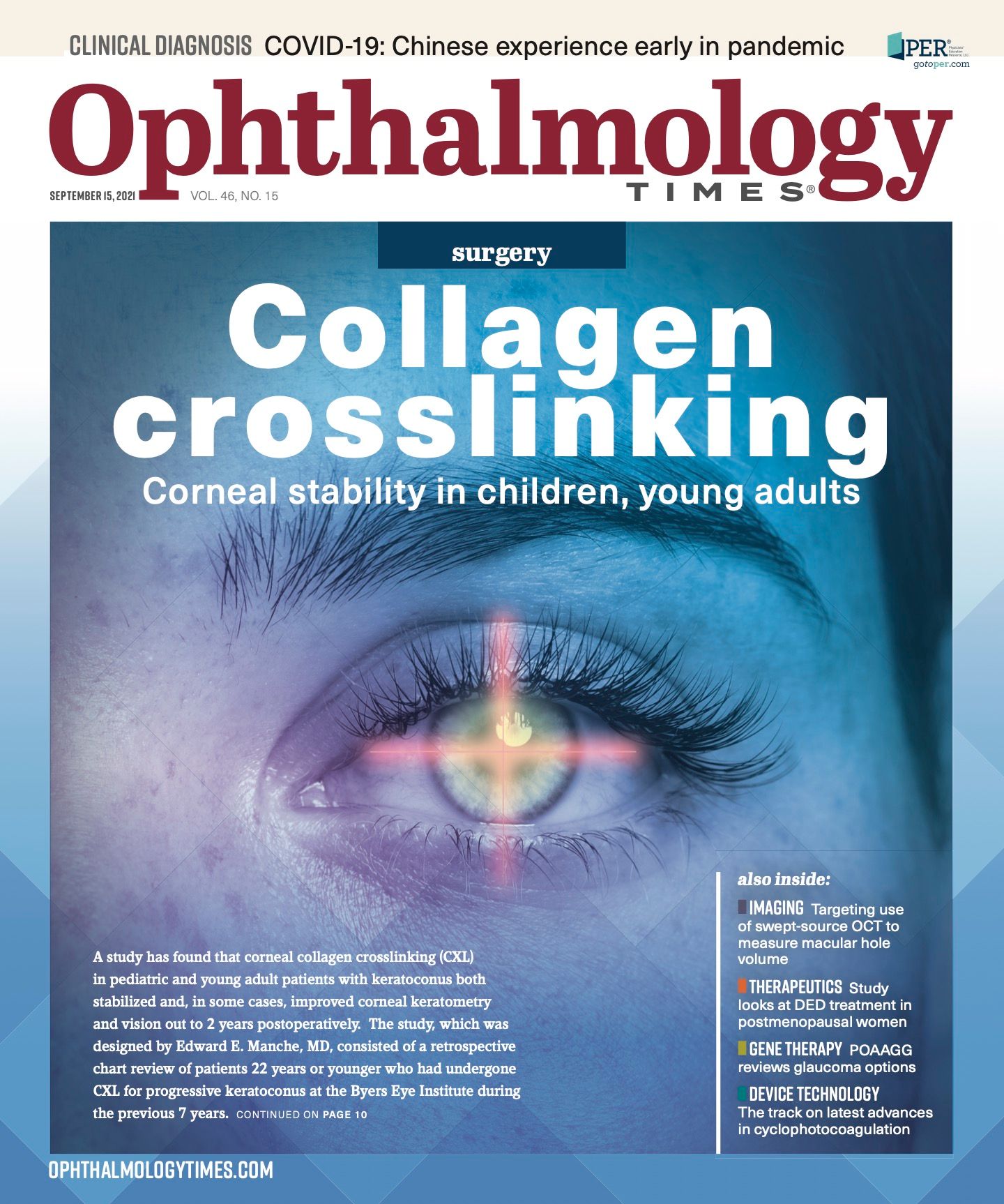Publication
Article
Digital Edition
Collagen crosslinking provides corneal stability in young patients
Author(s):
CXL is safe, effective to perform on younger population, study results show.

Saleh

Reviewed by Solin Saleh, MD
Corneal collagen crosslinking (CXL) in pediatric and young adult patients with keratoconus can stabilize, and in some cases even improve, corneal keratometry and vision out to 2 years postoperatively, according to study results presented by Solin Saleh, MD.
Saleh, who recently completed her pediatric ophthalmology fellowship at the Byers Eye Institute at Stanford University School of Medicine in California, reported the study results at the ASCRS 2021 annual meeting in July.
The study, which was designed by Edward E. Manche, MD, consisted of a retrospective chart review of patients 22 years or younger who had undergone CXL for progressive keratoconus at the Byers Eye Institute during the previous 7 years.
All CXL procedures were performed by Manche.
The investigators evaluated the patient records to identify changes in visual and corneal parameters, including best-corrected visual acuity (CDVA) and maximum keratometry (Kmax) out to 2 years after CXL.
The findings are important because although keratoconus generally is diagnosed during puberty, it can be more severe and progress more quickly when identified in younger children who may need corneal transplantation if the disease is not addressed, Saleh said.
Findings
Saleh reported that 86 eyes of 71 consecutive patients underwent CXL during the study period.
The patients ranged in age from 12 to 22 years (mean 16.4 ± 2.5 years) at the time of surgery.
Bilateral CXL was performed in 8 patients. Of the study sample, 57 eyes had completed a minimum of 1 year of follow-up and 24 eyes had completed 2 years of follow-up.
She reported that the mean preoperative CDVA was logMAR 0.38 ± 0.32 (Snellen acuity 20/48), with mean postoperative CDVA of 0.29 ± 0.31 (20/39) and 0.31 ± 0.31 (20/41) at 12 and 24 months postoperatively.
Related: Examining 10-year postop data on epi-off CXL for keratoconus, ectasia
Compared with preoperative mean Kmax, there was an improvement of –0.8 D to a mean postoperative Kmax of 59.1 ± 9.1 D at 12 months and –1.3 D to 59.7 ± 8.8 D at 24 months.
The authors concluded that CXL was both safe and effective to perform in this young patient population.
The procedure stabilized the cornea in these children and young adults, and in some cases the vision and the keratometry values improved.
The authors urged surgeons to consider CXL for treating pediatric patients with early keratoconus to prevent ongoing disease progression, especially given the risk of visual morbidity in children.
---
Solin Saleh, MD
E: solsaleh@stanford.edu
This article is adapted from Saleh’s presentation at the American Society of Cataract and Refractive Surgery annual meeting. She has no financial interest in this subject matter.
Edward E. Manche, MD
E: cornea@stanford.edu
Manche has no financial disclosures related
to this content.

Newsletter
Don’t miss out—get Ophthalmology Times updates on the latest clinical advancements and expert interviews, straight to your inbox.





